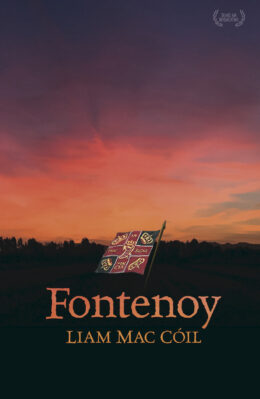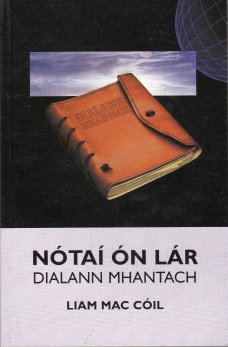Your cart is currently empty!
An Chláirseach agus an Choróin
€20.00
420 pages; paperback; ISBN 978-0-898332-45-2
Charles Villiers Stanford was a great composer, perhaps the greatest composer to have ever come from Ireland.
In this beautiful-looking book, not only is Stanford’s music and Gaelic music examined, but also Stanford’s cultural background. Indeed, it is not often we get an Irish book which examines Englishness, as is done in this book which gets to grips with both the Irish and the English question, and what it means to be an anglophonic Englishman, and what it means go be a Gael.
Charles Villiers Stanford is the greatest composer to have come from Ireland — who didn’t speak Irish. It was he, more than anyone else, who put Gaelic music — our music, the music of Irish speakers — on the musical stages of Europe and the United States. Even if he didn’t speak Irish, he showed respect and a deep understanding of Irish music.
By analyzing this beautiful music Mac Cóil analyzes the nation itself, and he finds that it is the Gael — the Irish speakers — who would best understand and who would best take to Stanford’s music, because it is their own music.
As part of his study he examines the background of the hymn Lúireach Phádraig, the English language version of which ‘Saint Patrick’s Breastplate’ Stanford wrote the music for – a hymn that goes to the heart of the matter of this book: music, religion, politics, nationality and language.
“A great book, raising troubling questions about how the historical process counterfeits objectivity and how we foolishly continue to see Ireland only in terms of Britain while absolutely refusing to read primary or secondary sources in any language other than English. As in Fontenoy, Mac Cóil is writing an alternative history of the Gael, taking that right away from the victor-colonialist. He is putting the Gael alongside Anglophone culture and removing him as a subset of that culture (this has yet to happen in America, where Irish studies is almost always a subset of British studies). Because he knows that history is fiction, and that it is used as a political tool, he very consciously (and very rightly) proposes that the Gael rewrite history. As he says, most profoundly, his feet firmly planted on the floor of Club Ráth Chairn, his local community center, ‘gineann muid ár sinsear [agus] ní bhíonn duine gan aird i measc a phobail féin’ (we beget our ancestors, and nobody is overlooked in his own community) (p. 324). It is a thought-provoking first step towards a reevaluation of Ireland on its own terms, not those of Anglophone colonialists or outsiders.” — Prof. Brian Ó Broin, H-Albion
You may also like…
-

An Litir
Liam Mac Cóil€15.00Galway, Spring 1612. The Atlantic port of Galway has become a hotbed of conspiracy and intrigue against English rule in Ireland. In this thrilling 17th century swashbuckler, Lucás,...
Add to cart -

Fontenoy
Liam Mac Cóil€18.00Fontenoy: In the archives of the French town of Chartres some printed pages from the 18th Century were discovered, and a reference to the mysterious author of these...
Add to cart -

Nótaí ón Lár
Liam Mac Cóil€10.00When the author was asked by An Aimsir Óg to provide some work to celebrate the Irish Language in the year 2000, and to do that, if possible, in the...
Add to cart

